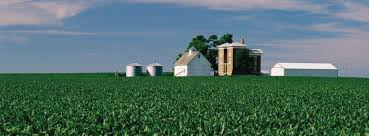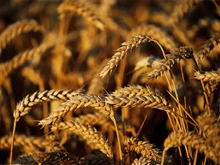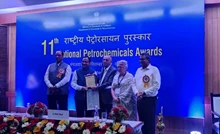Tips for Successful Farming – From Crop Selection to Harvesting
Tips for Successful Farming – From Crop Selection to Harvesting
In India, agriculture is one of the most significant fields. We can't conceive how the world would be without agriculture. Read through to find out the tips for a successful agricultural venture.

Every living thing needs food, and we rely on plants and animals to provide it. People began growing food in a limited area and utilised specific techniques for managing and improving it. This practice of cultivating crops is called agriculture.
In India, agriculture is one of the most important fields. We can't conceive how the world would be without agriculture. It is critical to understand the significance of agricultural techniques in India. Farmers are the world's agricultural industry's backbone.
Tips For Farmers
How to select Crop
Crop selection is the most important component in crop farming success. The following are some key crop selection factors:
The farm's location
Availability of land
Type of soil
Climate
The amount of money you put in and how much you hope to get back
Demand on the market
Availability and quality of water
Personal interests
Tips for Soil Preparation:
Ploughing, levelling, and manuring are used to prepare the soil in which crops will be produced. Crop development is influenced by a variety of factors, including soil texture, compaction, cation exchange capacity, and organic matter concentration. Some cultivation procedures, adding nutrients, utilising particular planting methods, or applying ways to modify variables like soil temperature, moisture retention, or compaction can all have an influence on soil characteristics.
Also crop rotation is an important element of farming since it relies on excellent, natural soil health.
Tips for Seed Selection:
For crop development, seed selection is critical. A good seed must grow into a plant; otherwise, we will not achieve the desired outcome, therefore we must pick excellent and healthy seeds. The following are characteristics of high-quality seed:
Increased genetic purity
Higher physical purity is required
Possession of good form, size, and colour, depending on variety requirements
Better physicality and weight
Increased germination (90 to 35 percent depending on the crop)
Better physiological vitality and endurance
Tips for Seed Sowing:
The key stage of sowing is the selection of high-quality crop strain seeds. Seed sowing can be done by hand or with the help of seed drilling equipment. Because of the high pricing of improved seeds, the majority of farmers are unable to afford them.
Tips for Irrigation:
A good amount of irrigation at regular intervals is required for any sustainable agricultural operation. The drip irrigation system is a new way to get started. It becomes easy to supervise since it can be managed by a machine.
Wells, ponds, lakes, canals, and dams are examples of water sources. Water-logging and crop loss can result from over irrigation. Then there's the issue of controlling the frequency and gap between subsequent irrigations.
Any farm's drainage system determines the soil's compatibility with daily water use. If you don't maintain your drainage systems on a regular basis, the consequences will be less than ideal.
Tips for Fertilisers/ Manures:
Composting, mulching, and utilising bio-fertilisers are some examples of organic practices that will assist encourage healthy crop development. Vermi-composting is another great way to organically provide essential nutrients to the soil. Inorganic fertiliser, Nitrogen fertiliser, and Phosphorus fertiliser are the different forms of fertilisers. Agricultural waste, livestock manure, and municipal sludge are examples of organic fertilisers.
Nutrients are required for crops to grow and create yield. As a result, nutrients must be provided at regular intervals. Manuring is the process of providing nutritional additions, which might be in the form of natural manure or fertilisers.
Tips for Weed Management:
Weeds are undesirable plants that grow in the middle of crops. Weeds are eliminated with weedicides, by plucking them out by hand, and in some cases, during soil preparation. Manual weeding (hand removal, pulling, and cutting), mowing, mechanical cultivation, and thermal control are all techniques for managing weeds in organic farming (flaming).
Tips for Pests and Diseases Management:
Viruses, bacteria, fungus, and insects are major plant pests and diseases that severely reduce plant yield. Pesticides and biocontrol agents can protect crops from a variety of pests and illnesses. Insect and disease management in crops can be accomplished in a variety of methods, including:
Encourage soil health
Select types that are resistant
Plant at the appropriate location
Beneficial insects should be attracted
Defend against pests
Crop diversity preservation
Pesticides are being used to combat pests
Pesticides that are organic
Crop rotation is important
Interplanting is a good idea
Floating row coverings should be used
Tips for Harvesting Plants:
Harvesting is the process of cutting and gathering the crop once it has reached maturity. The following aspects are critical for harvest procedures: choosing the right harvest time refers to the ripeness and maturity of the crop. Harvesting is best done early in the morning or later in the evening, when temperatures are cooler. Manual harvesting is excellent for fragile and high-value crops.
Tips for Successful Agriculture:
Farmers may take a number of critical actions to help agriculture succeed, including:
Invest in top-of-the-line farming machinery.
Without the proper machinery, the agricultural industry is incomplete. You are not obligated to purchase machinery with the first offer they make to you. It's always a smarter buy to scout the market for better prices.
Plant Early and Plant Wisely
The most crucial aspect of the planting process is determining the best time to plant. If your soil is ready before you start planting, it is the ideal method to utilise to improve yields.
Climate, cropping patterns, and agricultural productivity concerns
Cropping patterns that are based on climate and land capabilities are sustainable, but market forces and farmers' expectations are driving unsustainable systems.
Recognize your intended audience.
In most cases, there are several forms of farming and agribusiness to choose from. Your focus or specialty, on the other hand, must be determined ahead of time as part of your preparation.
Show your support to Agri-Journalism
Dear patron, thank you for being our reader. Readers like you are an inspiration for us to move Agri Journalism forward. We need your support to keep delivering quality Agri Journalism and reach the farmers and people in every corner of rural India.
Every contribution is valuable for our future.
We're on WhatsApp! Join our WhatsApp group and get the most important updates you need. Daily.
Join on WhatsAppSubscribe to our Newsletter. You choose the topics of your interest and we'll send you handpicked news and latest updates based on your choice.
Subscribe NewslettersLatest feeds
Typhoon Noru Looms Near West Bengal; Causes Heavy Rainfall in These States
Dept. of Consumer Affairs Hosts Capacity Building Workshop on Price Monitoring of Essential Commodities
MP Has Emerged as One of the Leading States in Agriculture, Thanks to Our Agri Scientists: Tomar
IIM Bodh Gaya Inks MoU with Bihar’s Water Resources Department
Red-Entries Against Farmers Burning Stubble in Punjab
APPSC Recruitment 2022: Apply for Food Safety Officer, Fisheries Inspector & Many Other Posts; Salary up to Rs. 1,40,000
ICAR Recruitment 2022: Work with Indian Institute of Spices Research & Get Rs. 35000 Monthly + Other Benefits
Govt Introduces ONDC as Alternative to Amazon and Flipkart to Reduce e-Commerce Domination
CNG Prices to Get Costly as Govt. Hikes Natural Gas Prices by 40 Percent
Prime Minister Narendra Modi Launches 5G Services in India













No comments